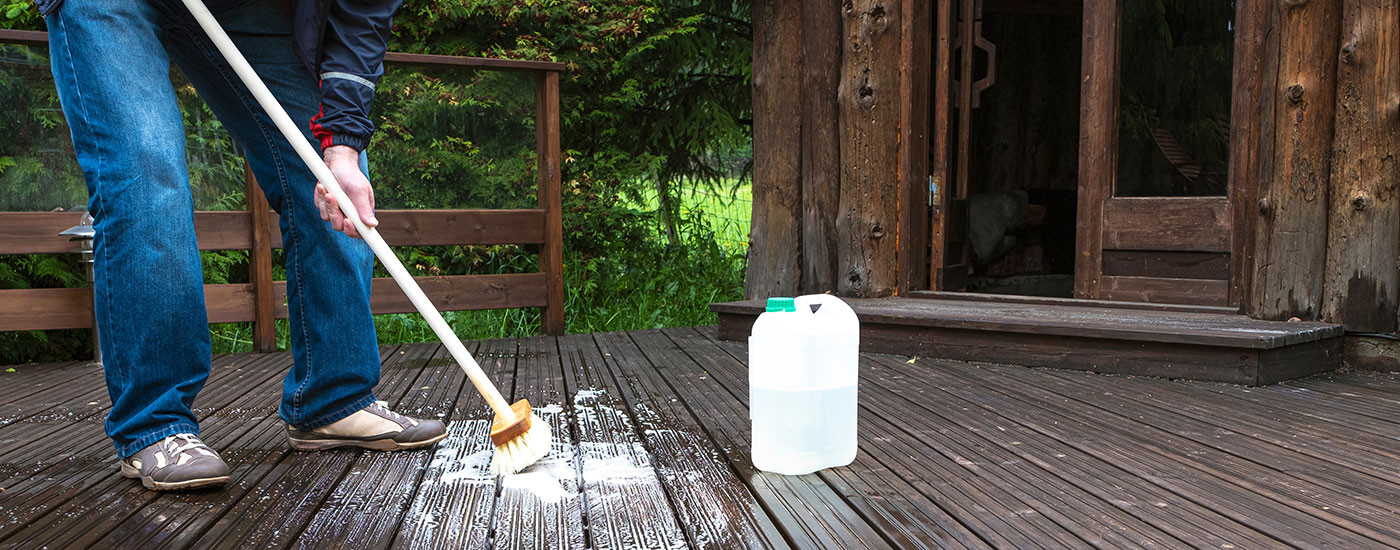Having a decked area in your garden provides the perfect entertainment spot for warm weather get togethers. But, without correct maintenance, decking will deteriorate through damage and wear and tear over time. Here’s what to do to keep your decking in tip top condition.
Environmental causes of damage to decking
Mould – if mould or mildew are allowed to form on the surface of your decking, they will cause slippery conditions and rotting that are a potential for injury and damage. To prevent an excessive build up of mould, regular cleaning and maintenance is required. Thoroughly cleaning your deck every year will help to prevent it becoming slippery but it is also important to clear (wet) leaves and dirt away with regular sweeping. Sealing the deck with a good decking stain or wood protector will seal out moisture. See our article How to stop decking being slippery for more tips.
Bad weather – we can’t do much to prevent the rain and snow, but unfortunately when wet weather freezes and thaws repeatedly, it can cause timber decking boards to crack or splinter. If water sits on the decking without being swept away, it will encourage the growth of mildew and algae which will lead to slippery timber (see above). Using a weather resistant protector like Protek Decking Stain or Protek Wood Stain & Protector will help.
Ultraviolet rays – the ultraviolet rays in sunlight will cause damage to timber decking. The wood can become bleached to a silver grey colour, and brittle. Protek Decking Stain contains resin which gives a hardwearing but flexible finish to the decking which makes it less prone to cracking. If the sunshine has already started to take effect, the Protek range of colours will let you restore your decking back to its former glory.
Sadly, though, decking isn’t just prone to environmental wear and tear and there are other, manmade causes of damage. Happily, these can be avoided or reduced to a minimum.
Excessive weight
Wooden decking that has been well constructed from quality timber is more than capable of bearing a certain amount of weight. However, when we look at the amount of things we place on our decking, particularly in the summer months, the weight can soon add up. Hardwood furniture, or heavy stone or cast iron pieces may be joined by a barbecue grill and gas bottle, extra chairs and perhaps a weighted umbrella stand. Wherever possible, position what you can on a nearby paved or grassed area. If you are in an area that experiences heavy winter snowfall, consider storing your timber garden furniture safely away.
Pressure washing decking
Reducing the environmental causes of damage to decking often involves keeping it clean and clear of debris, and it can be all too easy to get the pressure washer out, especially if the decking covers a large area. Unfortunately, overzealous use of a pressure washer can be damaging to timber, as it can cause splintering of the wood, so a pressure washer is not recommended. However, if you do use one, ensure a maximum pressure of 500psi. Keep the nozzle a distance from the surface of the timber as it could mark the decking, and use a sweeping motion at all times, keeping the pressure washer moving along the grain of the wood, not across it.
Following these easy steps will ensure your existing decking carries on for a long time yet, but if you are looking for new timber decking, our decking supplies offer everything you will need. For any further help or advice, our experienced and friendly sales team can be contacted by email at sales@withamtimber.co.uk or by phone on 01205 359188.

